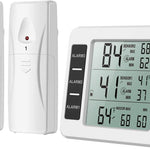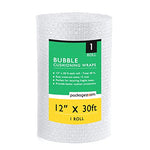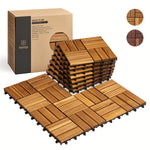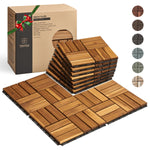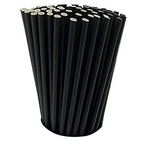You have no items in your shopping cart.
Polyurethane foam, often referred to as PU foam, is a remarkable material that has found its way into countless applications across various industries. Its unique properties, including resilience, durability, and versatility, make it a popular choice for diverse applications, from everyday consumer products to specialized industrial uses. In this comprehensive guide, we delve into the world of polyurethane foam, providing insights based on expertise and credible sources. Whether you're curious about its composition, curious about its applications, or interested in understanding its environmental impact, this article has got you covered. So, let's dive in and explore the fascinating world of polyurethane foam!
Polyurethane Foam: What is it?
Polyurethane foam is a type of synthetic polymer created through the reaction of polyols and diisocyanates. It is widely recognized for its exceptional versatility, as it can be formulated to exhibit varying properties depending on the intended application. From soft, flexible foams used in upholstery to rigid foams used in insulation, polyurethane foam serves a myriad of purposes.
Types of Polyurethane Foam
There are several types of polyurethane foam, each designed to cater to specific needs and requirements:
1. Flexible Polyurethane Foam
Flexible polyurethane foam is known for its outstanding cushioning and comfort. It is commonly found in various upholstered furniture, mattresses, automotive seats, and even footwear. Its ability to conform to the shape of the body while providing support makes it a preferred choice in many comfort applications.
2. Rigid Polyurethane Foam
Rigid polyurethane foam, on the other hand, boasts exceptional thermal insulation properties, making it ideal for construction and refrigeration applications. This type of foam is widely used in building insulation, doors, and panels, as well as refrigerators and freezers.
3. Integral Skin Polyurethane Foam
Integral skin polyurethane foam is characterized by its dense, tough outer surface and a softer core. This type of foam finds its utility in applications where both durability and comfort are crucial, such as in the production of steering wheels and armrests.
4. High Resilience Polyurethane Foam
High resilience polyurethane foam, also known as high resilience (HR) foam, is designed to offer exceptional support and bounce-back properties. It is commonly used in premium-quality mattresses and seating applications where long-lasting comfort is desired.
Properties of Polyurethane Foam
Polyurethane foam exhibits a diverse range of properties, which contributes to its widespread applicability. Some of the key properties include:
1. Cellular Structure
Polyurethane foam is characterized by its open-cell or closed-cell structure, which impacts its density and compression resistance. Open-cell foams are softer and more flexible, while closed-cell foams are rigid and have better insulating properties.
2. Density
The density of polyurethane foam varies depending on its composition and intended use. Low-density foams are lightweight and flexible, while high-density foams are sturdier and more rigid.
3. Compression Resistance
Polyurethane foam's ability to resist compression makes it suitable for long-term use in various applications without losing its shape or supportive qualities.
4. Thermal Insulation
Rigid polyurethane foam, in particular, has excellent thermal insulation properties, making it an energy-efficient choice for buildings and appliances.
5. Sound Absorption
The open-cell structure of some polyurethane foams enables them to absorb and dampen sound, making them valuable in acoustic applications.
6. Resilience
Polyurethane foam's resilience refers to its ability to return to its original shape after being subjected to pressure, providing long-lasting comfort and support.
Applications of Polyurethane Foam
Polyurethane foam's versatility is reflected in its extensive range of applications across diverse industries. Here are some of the notable applications:
1. Furniture and Bedding
Flexible polyurethane foam is widely used in furniture upholstery and mattresses, providing comfort and support for users.
2. Automotive Industry
Polyurethane foam is a vital component in automotive seats, headrests, and interior padding, ensuring a comfortable and safe driving experience.
3. Insulation
Rigid polyurethane foam is employed as an excellent thermal insulator in buildings, refrigerators, and other appliances, reducing energy consumption and costs.
4. Footwear
Polyurethane foam is utilized in the midsoles of shoes to provide cushioning and shock absorption, enhancing comfort during long walks or physical activities.
5. Packaging
The protective properties of polyurethane foam make it an ideal choice for packaging delicate and valuable items, preventing damage during transit.
6. Buoyancy Aids
Closed-cell polyurethane foam is used in life jackets and other buoyancy aids due to its ability to keep individuals afloat in water.
7. Acoustic Panels
The sound-absorbing capabilities of polyurethane foam find application in the production of acoustic panels and soundproofing materials.
8. Sealants and Adhesives
Polyurethane foam-based sealants and adhesives provide strong bonds and waterproof seals in construction and manufacturing applications.
9. Medical Devices
Polyurethane foam is employed in various medical devices, such as wound dressings and cushioning materials for prosthetics.
10. Recreational Equipment
From foam padding in helmets and sporting gear to flotation devices for water sports, polyurethane foam enhances safety and comfort in recreational equipment.
Benefits of Polyurethane Foam
Polyurethane foam offers a host of benefits, making it an indispensable material in various industries. Some of the key advantages include:
1. Comfort and Support
Flexible polyurethane foam's exceptional comfort and support make it an excellent choice for furniture, mattresses, and seating applications.
2. Energy Efficiency
Rigid polyurethane foam's high thermal insulation properties contribute to reduced energy consumption and lower utility bills.
3. Versatility
The ability to tailor polyurethane foam's properties to specific needs allows for a wide array of applications in different industries.
4. Lightweight
Polyurethane foam is lightweight, making it easy to handle and transport, while still maintaining its structural integrity.
5. Durable
The resilience and compression resistance of polyurethane foam ensure long-lasting performance in various applications.
6. Environmentally Friendly
Increasing efforts are being made to produce eco-friendly polyurethane foam with reduced environmental impact.
FAQs about Polyurethane Foam
Q: Is polyurethane foam safe for indoor use?
A: Yes, polyurethane foam is generally safe for indoor use. However, some older formulations might release volatile organic compounds (VOCs), so it's advisable to choose low-emission or green-certified foam for better indoor air quality.
Q: How do I clean polyurethane foam surfaces?
A: Cleaning polyurethane foam surfaces is relatively simple. Use a mild detergent mixed with water to gently clean the area. Avoid using harsh chemicals or abrasive materials that may damage the foam.
Q: Can polyurethane foam be recycled?
A: Yes, some types of polyurethane foam can be recycled. There are recycling facilities that accept polyurethane foam waste and convert it into useful products like carpet underlay or insulation.
Q: Does polyurethane foam contribute to landfill waste?
A: While polyurethane foam can contribute to landfill waste, its recyclability and reusability options help reduce its environmental impact.
Q: Is polyurethane foam biodegradable?
A: Traditional polyurethane foam is not biodegradable. However, there are ongoing research and developments in creating biodegradable alternatives.
Q: What is the lifespan of polyurethane foam in different applications?
A: The lifespan of polyurethane foam varies depending on the type and usage. High-quality foams can last for decades in well-maintained applications, such as furniture and bedding.
Polyurethane foam has undoubtedly revolutionized numerous industries with its remarkable properties and unmatched versatility. From the comfort of our mattresses and furniture to the energy efficiency of our homes, polyurethane foam plays a crucial role in enhancing our daily lives. As technology advances, we can expect even more eco-friendly and innovative formulations of polyurethane foam, further cementing its position as a material of choice for various applications.
So, the next time you relax on your favorite sofa or enjoy the insulation benefits of your home, remember the incredible contributions of polyurethane foam - an extraordinary material that continues to shape our world for the better.


